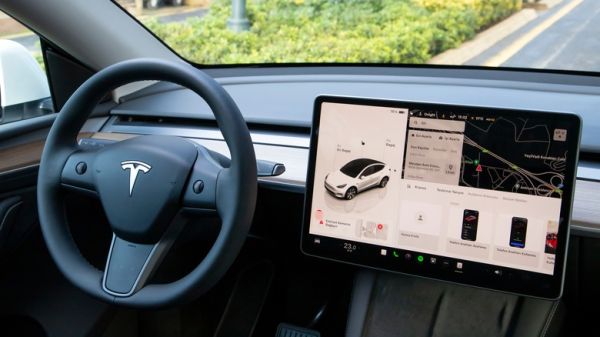A parked car is never fully inactive. The battery inside a fossil fuel-powered vehicle still provides energy to certain electrical components like the alarm system and clock, albeit in minuscule doses. This small amount of power draw doesn’t significantly drain the stored energy in the battery, leaving plenty for you to start the car. Tesla’s electric vehicles (EVs) have the same always-on features. However, since they rely solely on batteries to function, even a tiny bit of battery drain while parked is noticeable.
Advertisement
What’s tricky about Tesla vehicles is that the stored energy utilized to keep some features working while parked is also used to power the motors that move the car. Tesla owners have complained on various online platforms that their EVs tend to lose a few miles of range overnight or during periods of inactivity. The phenomenon has been dubbed “phantom drain” because of how the batteries slowly run down when not driving nor charging.
When parked, Teslas — and other EVs — continue to perform background tasks that require energy. The security feature called Sentry Mode uses external cameras to continuously monitor the vehicle’s surroundings while at rest. Although this gives owners peace of mind against theft and vandalism, it’s the biggest culprit behind phantom drain. Other features that contribute to the draining issue include cabin overheat protection, system security checks, scheduled over-the-air (OTA) software updates, and alway-on third-party accessories like additional dashcams. Tesla’s smartphone app — which remotely checks the car’s status — also triggers energy consumption when the car is off.
Advertisement
How to stop Tesla phantom drain
In July 2024, Tesla rolled out a fix to counter phantom drain and help its cars conserve energy when parked. The fix came in the form of an update for the Tesla smartphone app, which allows owners to remotely monitor their vehicle. Owners can also issue commands for locking and unlocking doors, regulating cabin temperature, and heating the windshield, as well as checking the status of dog mode. Before the update, the app would automatically wake the vehicle every time it was launched, instantly causing some degree of battery depletion. With the update, the app only activates the car when a command is issued; checking the car’s status would no longer cost energy.
Advertisement
While the app update effectively addressed the unintended battery loss from remote car monitoring, the other causes of phantom drain persist. However, they can be remedied manually by car owners. For example, disabling Sentry Mode when parked can help slow the unnecessary battery drain, but this is only advisable for people who park their vehicle in their own garage or another secure location. Deactivating cabin overheat protection (when the weather permits) and third-party accessories — as well as adjusting security checks and software update schedules — can also reduce background energy use. Enabling Energy Saving Mode in newer models that have it does the same trick, too. Finally, Tesla recommends keeping the car plugged in when parked since this will draw power directly from the grid to operate background tasks. Here are some extra tips to get more range from your Tesla.
Advertisement









